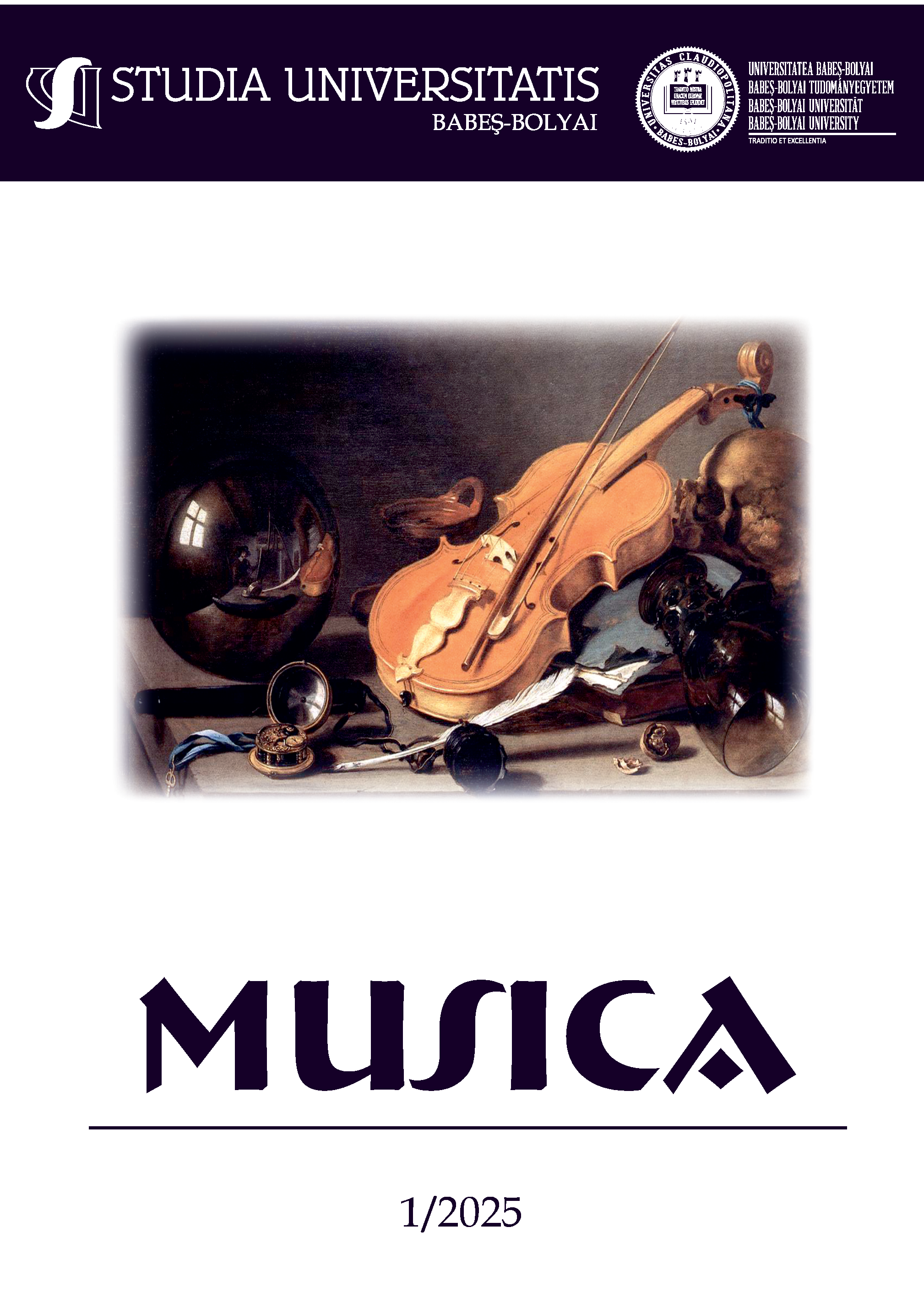Harpsichord or Piano? Development of Bach’s “Italian Concerto” BWV 971 Performance in Modern Musical Practice
DOI:
https://doi.org/10.24193/subbmusica.2025.1.12Keywords:
harpsichord, piano, Italian concerto, authenticity, early musicAbstract
This article compares piano and harpsichord interpretations of J. S. Bach’s Italian Concerto in F Major, BWV 971. I’ve often wondered “How to play Bach’s music correctly?” This question stemmed from historical authenticity in interpretation. Authentic performances of Bach’s compositions raise a variety of problems regarding sound, technique, and style. This is due to the fact that Bach composed during a period in history when the organ, harpsichord and the clavichord were the primary keyboard instruments. It is possible to perceive and experience Bach’s music in a fundamentally different way depending on whether it is played on the piano or the harpsichord. Because dynamics cannot be altered and there is no pedal, the harpsichord demands a crisper and more distinct polyphony between voices. Articulation and ornamentation are crucial for clarity on the harpsichord, and phrases need to be formed by agogic and rhythmic shaping. When playing the piano, the performer has the ability to express themselves freely through the use of dynamics. A more expressive sound that is more closely related to vocal emotion is possible. When there is an excessive amount of pedalization or an extremely passionate attack, there is a possibility that the polyphony will become distorted.
References
1. Dokter, Julia. Tempo and Tactus in the German Baroque. University of Rochester Press, Rochester, 2021.
2. Freeman, Daniel E. “The Earliest Italian Keyboard Concertos.” In The Journal of Musicology, vol. 4, no. 2, 1985, pp. 121–45. JSTOR, https://doi.org/10.2307/763792 (8 Mar. 2025).
3. Garcia, Federico. “The Nature of Bach’s ‘Italian Concerto’ BWV 971.” Bach, vol. 36, no. 1, 2005, pp. 1–24. JSTOR, http://www.jstor.org/stable/41640532 (8 Mar. 2025).
4. Linfield, Eva. “Formal and Tonal Organization in a 17th-Century Ritornello/Ripieno Structure.” The Journal of Musicology, vol. 9, no. 2, 1991, pp. 145–64. JSTOR, https://doi.org/10.2307/763550. (8 Mar. 2025).
5. Marvin E. Peymer. “The Instrumental Music Attributed to Giovanni Battista Pergolesi: A Study in Authenticity”, PhD diss., City University of New York, 1977.
6. Schulenberg, David. “Expression and Authenticity in the Harpsichord Music of J.S. Bach.” The Journal of Musicology, vol. 8, no. 4, 1990, pp. 449–76. JSTOR, https://doi.org/10.2307/763530. (8 Mar. 2025).
7. Williams, Peter. “Some Thoughts on Italian Elements in Certain Music of Johann Sebastian Bach.” In Recercare, vol. 11, 1999, pp. 185–200. JSTOR,
8. http://www.jstor.org/stable/41701304 (8 Mar. 2025).
9. Zacconi, Ludovico. Prattica di musica utile et necessaria si al compositore per comporre i canti suoi regolatamente, si anco al cantore per assicurarsi in tutte le cose cantabili: divisa in quattro libri. Bibliothèque nationale de France, Venetia, 1622, https://vmirror.imslp.org/files/imglnks/usimg/1/18/IMSLP288425-PMLP467933-Zacconi-_Prattica_di_musica.pdf (8 Mar. 2025)
Downloads
Published
How to Cite
Issue
Section
License
Copyright (c) 2025 Studia Universitatis Babeş-Bolyai Musica

This work is licensed under a Creative Commons Attribution-NonCommercial-NoDerivatives 4.0 International License.



